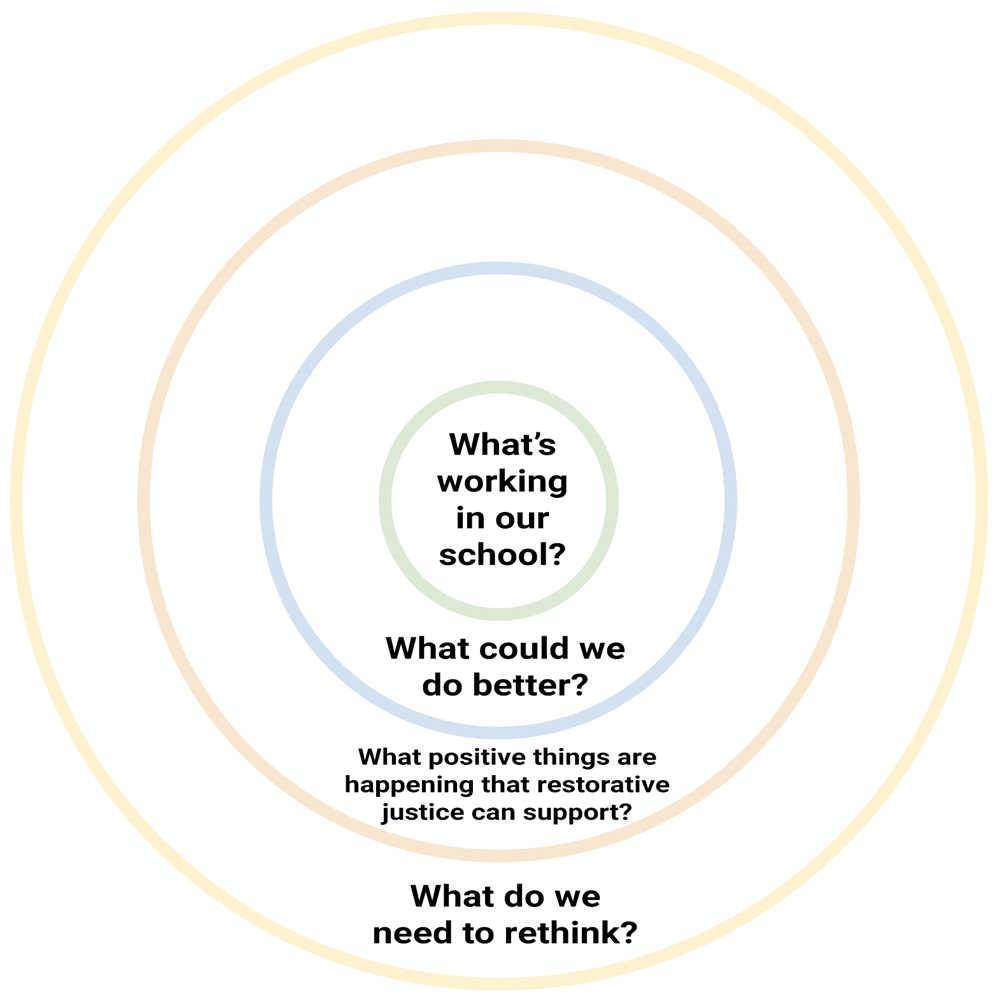Objective: To explore and brainstorm ways to integrate restorative justice practices into your learning environment.
The estimated time for this activity is 45-60 minutes.
Explore this Website
On the web page Restorative Justice in Schools: SEL in Action, David Yusem shares that “Restorative justice views ‘harm’ as a fracturing of relationships, rather than something that demands punishment.” In remote/hybrid learning, we must consider novel relationships and new opportunities for students to engage with peers to support restorative justice practices.
Tips for designing restorative talking circles in a remote/hybrid environment:
- Build in time across a week for virtual restorative talking circles so students can access the circle whether they are at home or school.
- Consider establishing smaller circle groups of 10 to 15 students at a time.
- Involve each circle participant in creating collective community values that can be reviewed before circle activities.
- Create an intentional space by sharing your screen to play soft music or lead your class through a mindfulness exercise at the beginning of the circle.
- Consider an asynchronous “check-in” to ensure that all voices are heard. Create a shared table in Google Docs with space for your students’ names and what they want to share for that check-in. The check-in may be guided by a question or already established norms and protocols for your restorative circle
Stop and Think
(Key: T – Teachers; SL – School Leaders; DL – District Leaders)
- If you haven’t already, take a moment to watch the introductory video, Restorative Justice in Oakland Schools — Tier 1: Community (linked in the website listed above). In the video, students from Oakland High School participate in a restorative circle. What aspects of their circle help them establish a safe, welcoming, and affirming environment? (T, SL, DL)
- After reading Restorative Justice in Schools: SEL in Action (linked in the website listed above), how would you define the term restorative justice in your own words? (T, SL, DL)
- How would creating space for restorative talking circles in your remote/hybrid environment contribute to a community of learners? (T, SL)
- What current structures or routines within your remote/hybrid learning environment could be utilized to create safe spaces for restorative circles and discussions? What might this look like? (T, SL)
- In what ways would restorative justice practices contribute to the community wealth of your district? (SL, DL)
Brainstorm and Design
According to the web page above, “there is no plug and play model for implementing restorative justice practices at a school. Restorative justice implementation is profoundly related to the ecosystem of each school or district.” The OUSD Restorative Justice Implementation Guide identifies four questions to help you begin establishing a restorative justice framework:
- What’s working in our school?
- What could we do better?
- What positive things are happening that restorative justice can support?
- What do we need to rethink?
The four questions can be found in the graphic below. Begin with the inner circle and work your way out to assess the climate of your learning community and identify next steps in restorative justice implementation.

After brainstorming the indicators above individually or with colleagues, you may choose to dig deeper into any of the additional resources, frameworks, and implementation guides below. Consider how your classroom or school could use their models to take the necessary next steps toward restorative justice practices.
- The Oakland Unified School District Framework for Restorative Justice which identifies four questions to help you begin establishing a restorative justice framework.
- Restorative Justice — Fostering Healthy Relationships & Promoting Positive Discipline in Schools from the National Opportunity to Learn Campaign. This guide provides implementation tips and strategies, as well as examples from school districts.
- The San Francisco Unified School District uses restorative practices throughout the district. This Whole-School Implementation Guide provides a framework for planning, implementing, and using restorative practices across a school or district.
- 8 Tools for Schools Interested in Restorative Justice — Edutopia.org discusses the benefits of implementing restorative justice in schools and provides eight resources and tools to explore further.
